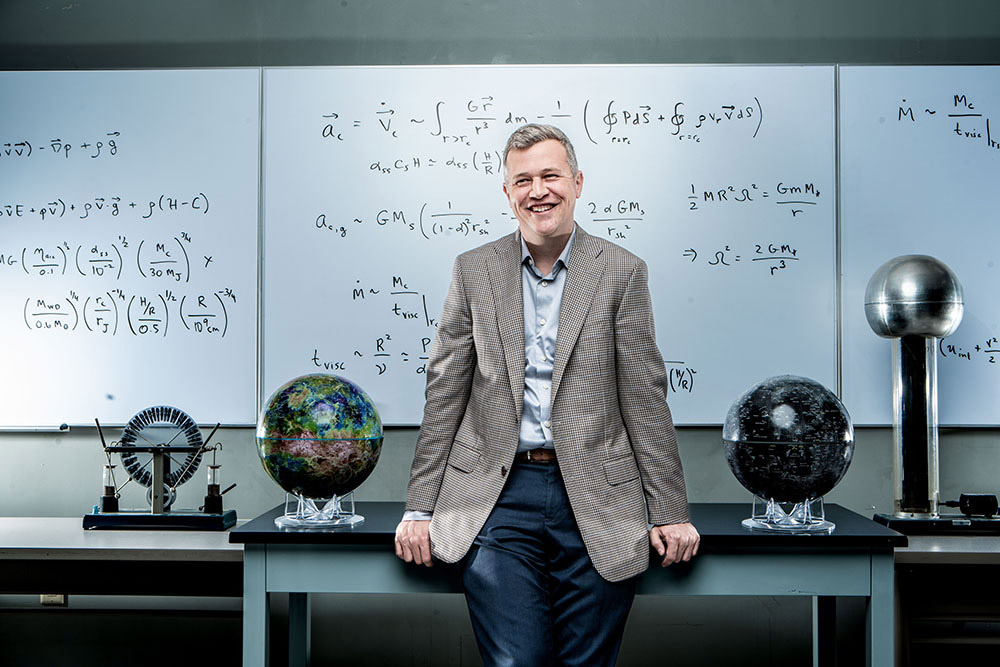Astrophysicist uses NSF funding to grow the number of deaf, hard-of-hearing, and Hispanic researchers
Jason Nordhaus hopes to drive future discoveries by promising students
Scott Hamilton/RIT
Jason Nordhaus, associate professor of physics at RIT’s National Technical Institute for the Deaf, has received an NSF grant to grow the number of researchers who are deaf, hard-of-hearing, and from Hispanic backgrounds.
Astrophysicist Jason Nordhaus is breaking cultural and disciplinary boundaries by helping to grow the number of deaf, hard-of-hearing, and Hispanic researchers. And, in doing so, he is enabling these future scientists to drive discoveries in one of his areas of expertise—neutron star astrophysics.
Nordhaus, an associate professor of physics at Rochester Institute of Technology’s National Technical Institute for the Deaf, has earned a National Science Foundation grant that connects NTID with Texas Tech University, a Hispanic Serving Institution. Through a series of unique summer research exchanges between the two universities, five promising undergraduates will study alongside the world’s astrophysics experts and Ph.D. candidates.
“This experience is designed to take teams of people from different universities that would naturally benefit from working with each other and bring them together,” said Nordhaus, who received the $313,000 grant with co-principal investigators Manuela Campanelli and Carlos Lousto, professors in RIT’s College of Science. All three are members of RIT’s Center for Computational Relativity and Gravitation. “At RIT, we have theorists and computational experts in the field of neutron stars, and Texas Tech has amazing scientists who are experts in data analysis and observations. Let’s get together and see what we can discover.”
The team’s area of expertise is neutron stars, extreme density objects that are produced from the collapse of a massive star. Neutron stars are born during the subsequent supernova explosion and can be difficult to detect as they age because they do not emit much light. Nordhaus’s research is based on learning their properties including their mass and spin rates, how they are accelerated to high speeds, whether they are magnetized, and how heavy elements in the universe, like gold, silver, platinum and lead, are formed when neutron stars merge.
“We are entering a golden age for studying neutron stars,” explained Nordhaus. “New observations leveraging electromagnetic, gravitational wave, and neutrino emission will provide unparalleled opportunities to answer fundamental questions in astrophysics. With a dream team composed of the world’s experts on neutron stars, we are pursuing research avenues that will drive new scientific discoveries.”







